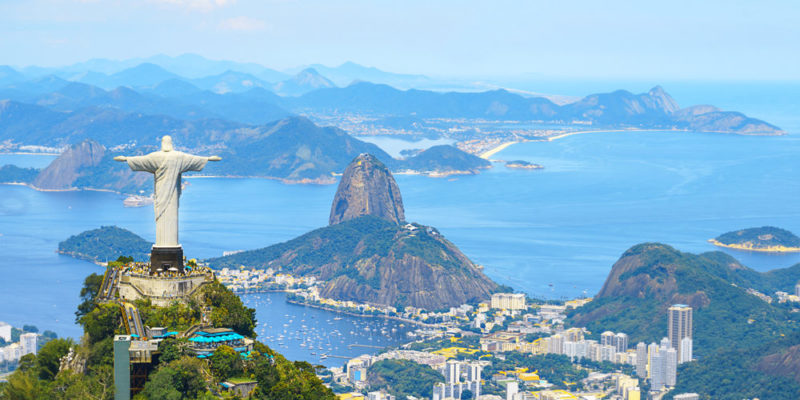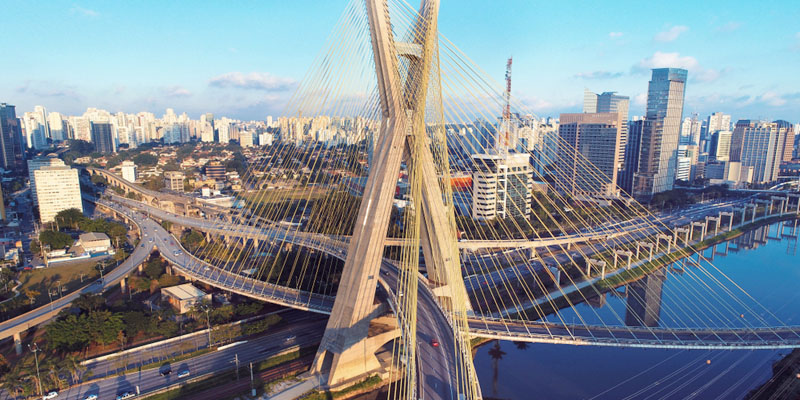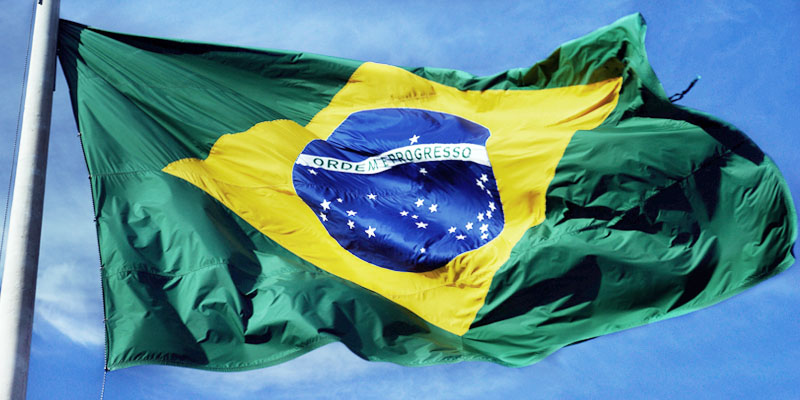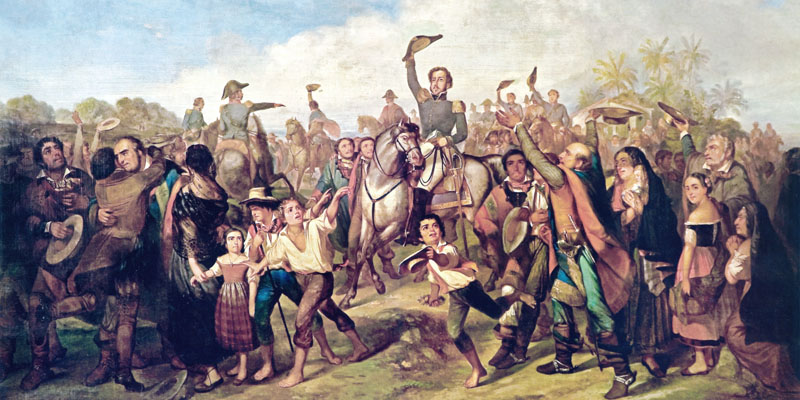We explain everything about Brazil, its characteristics, history and culture. In addition, its flora, fauna, economy, geography and more.

Brazil
Brazil is a national state whose official name is Federative Republic of Brazil. It is the largest country of South America and the fifth country with the largest extent of the world in the world after Russia, China, Canada and the United States. It has borders with all the countries of South America, with the exception of Chile and Ecuador. Limit to the north with Guyana, Surinam, Guyana French, Venezuela and Colombia, to the west with Peru and Bolivia and to the south with Paraguay, Argentina and Uruguay. Its capital is the city of Brasilia.
Brazil has 203,100,000 inhabitants and is the most populous country in Latin America. He was conquered by Portugal and, after his independence, retained the Portuguese as the official language, except in some indigenous populations that still retain their original language and live in remote places of the Amazon.
Brazil is divided into 26 states and the Federal District of Brasilia. The most extensive is the state of Amazonas, in the north of the country, with 1,577,000 square kilometers. It is so extensive that if it were a country it would be the third largest in South America after Brazil and Argentina.
Why is it called that? The name “Brazil” is a term in Portuguese that derives from the term “Pau-Brazil”, a kind of tree (Caesalpinia Echinata). The name “Brazil” was initially used to refer to the wood of this tree, which was highly valued in Europe for its reddish color and its usefulness in the manufacture of fine dyes and woods. The first Portuguese explorers began to trade with Pau-Brazil wood. Over time, the name of the tree extended to call its inhabitants to the territory.
Characteristics of Brazil
- Its population is 203,100,000 inhabitants
- It has an area of 8,514,000 km2which represents a population density of 23.8 inhabitants per km2.
- Its capital is the city of Brasilia, which has 3,500,000 inhabitants.
- The official language is the most professed Portuguese and religion is the Protestant.
- The predominant climate is the warm tropical.
- The highest peak is the Pico da Neblina, with 2995 meters high.
- The most important river in the country is the Amazon, the largest in the world with 6400 kilometers long.
- Its main economic activities are agriculture, industry and tourism.
- It is the first world producer of coffee and sugarcane.
- Feijoada and Caipirinha are characteristic of its gastronomy.
- The official currency is the real.
Extension, population and capital of Brazil

Brazil has an extension of 8,514,000 square kilometersso it is the largest country in South America and the fifth largest in the world. It has a population of 203,100,000 inhabitants, and a population density of 32.8 inhabitants per square kilometer.
Brazil is divided into 26 states and the Federal District of Brasilia. The most populated states are San Pablo with 44.4 million inhabitants, Minas Gerais with 20.5 million and Rio de Janeiro with 16 million.
The capital of Brazil is the city of Brasilia. It has a population of 3,500,000 inhabitants, which represents 1.7 % of the country’s total. Brasilia was founded in 1960 with the intention of developing a capital away from the large urban centers San Pablo and Rio de Janeiro. For that reason it has so little urban supremacy in relation to the total population of the country.
Climate, relief and hydrography of Brazil

The climate that predominates in Brazil is warm tropical With its three variations: Equatorial in the north, monzonic tropical in some regions of the Center and Tropical of Sabana in the center and south of the country.
In the central regions of the territory rainfall abounds during the summer monthsranging from November to April. The rains in general accumulate between 1000 and 1500 millimeters per year, although they vary according to the region and are usually very abundant in the Amazon area (between 2000 and 3000 millimeters per year).
At the southern end the weather is Wet subtropical temperate. In some areas of the Northeast, ranging from Bahia to the coasts of Natal and San Luis, the weather is warm semi -arid.
The relief of Brazil is characterized by having three differentiated structures:
- The Amazonian plain. It is the predominant relief of the center and northern Brazil. It is a low and undulating plain made up of the Amazonas river basin and its hundreds of tax and tributaries.
- The Brasilia massif. It is the predominant relief of the east and south of Brazil. These are ancient and eroded reliefs, of little altitude. Some low and rock hills are up to 3000 million years old.
- The Guyanese shield. It is the highest relief in the country and is located in the north, on the border with Guyana. Its highest peak is the Pico da Neblina, with 2995 meters above sea level.
The country has a large river system that is drained by the Amazon river, the most extensive and caudalous in the world that also crosses the countries of Peru and Colombia. In addition, there are numerous rivers and smaller streams that drain into the Atlantic Ocean.
Brazil Flora and Fauna

Brazil’s flora and fauna presents greater biodiversity than any other country on the planetespecially, in the Amazon jungle. It is the largest jungle in the world, and has an extension of almost 7 million km2.
Vegetation is very abundant With trees such as Maruá, El Cedro, La Caoba, El Palo Violeta, La Pitanga, La Palmera, Ishpingo and the Yvyá Isí. Also, there are plants such as orchid, Bignonia, Lily and Princess Flor. Many of the plant species are fruitful or have medicinal use sheets.
The diversity of ecosystems It also houses numerous animal speciessuch as the pink dolphin, the lazy, the Tití monkey, the Anaconda Verde, El Tucán, El Guacamayo, El Lizarto, the Black Caiman, the Electric Anguilla, the Piralrucu and the frogpy frog frog.
Brazil culture

The culture of Brazil is characterized by the influence of indigenous, African, European (such as Italian) and other countries in the world such as Japan (Brazil houses the largest Japanese colony outside Japan).
The official language of Brazil is the Portuguesespoken by most of its population. In addition, more than 150 indigenous languages are spoken, among which the Tikuna and Kaiowá stand out. The predominant religion is the Catholic, professed for more than 50 % of the population, and to a lesser extent the evangelical, practiced by 30 %.
One of the main reflexes of Brazilian cultural diversity is music: African folklore in Portuguese, Samba, Axé and Bossa Nova are some representative genres. Its main referents are Tom Jobim, Caetano Veloso, Vinicius de Moraes, Chico Burque, Gilberto Gil, Elis Regina and Gal Costa.
Carnival and Capoeira are a central part of the Brazilian musical tradition. The Carnival acquired worldwide recognition due to the imposing deployment of the celebration and the quality of the show of the different comparsas that parade to the beat of traditional music.
The Capoeira, meanwhile, emerged as a martial art technique and, over time, became an expression of national culture of Brazil. He currently combines struggle techniques with popular dance of African influence and is one of the most recognized Brazilian culture representations worldwide.
In the field of literature, writers stand out as Joaquim María Machado de Assis, considered the greatest exponent of the country’s literature, José Mauro de Vasconcelos, recognized worldwide for his work My Lima Orange Plant, Clarice Lispector, who was born in Ukraine but lived in Brazil since the age of two, Jorge Amado, Carolina María de Jesús, Adélia Prado and Itamar Vieira Júnior.
In the painting, the painters Tarsila do Amaral and Lygia Clark, and the painters Victor Meirelles and Cándido Portinari are recognized.
Brazilian cuisine reflects the country’s cultural diversity. Their dishes and drinks stand out for the variety of ingredients and combinations of different parts of the world.
One of the most emblematic dishes is the Feijoadaa stew made with black beans and meat. Another very popular dish is the I worea mass of fried beans stuffed with shrimp, pepper and other condiments. As for drinks, the Guaraná is very popular, and the Caipirinha It is the best known cocktail in Brazil. It is prepared with Cachaza (a distillate of sugarcane), lime, sugar and ice. Coffee also stands out.
Patriotic symbols of Brazil

The national symbols of Brazil are:
- The Brazilian flag. It is made up of a green background with a yellow rhombus. Within the rhombus there is a blue circle with the phrase “order and progress” and 27 white stars. It was adopted as an official flag on November 19, 1889, although over time stars were added. The current 27 stars flag was adopted in 1992.
- The National Anthem of Brazil. His music was composed of Francisco Manuel da Silva, and the lyrics by Joaquim Osorio Duque Estrada. It was adopted as an official national anthem in 1890.
- The Brazilian shield. The coat of arms of Brazil was adopted in 1889. It consists of a celestial circle with 5 white stars that form the southern cross, surrounded by 27 white stars. This circle is inside a green and yellow five -pointed star with red edges, and is crossed by a white sword. Under the shield there is a light blue tape with yellow letters with the registration “Federative Republic of Brazil – 15 of 1889” already the sides there is a coffee plant and one of tobacco.
Economic activities of Brazil
The economy From Brazil is the most developed in South America and one of the most important in the world. Its main economic activities are:
- Agriculture. It is one of the country’s main export activities. Brazil is the first world producer of coffee and sugarcane, and the second soy and citrus.
- The industry. The main industries developed in the country are automotive, petrochemicals, textiles and food and drinks.
- Tourism. The country receives about seven million foreign tourists a year that choose as destinations Salvador Bahía, the beaches of Santa Catarina, the Iguazú Falls (one of the seven natural wonders of the world, which it shares with Argentina) and Rio de Janeiro (where one of the seven wonders of the modern world is located: the Redeemer Christ).
Its official currency is the realand its main commercial partners are China, the United States and Argentina. It is part of Mercosur Together with Argentina, Uruguay, Paraguay and Venezuela.
History of Brazil

The territory of Brazil was inhabited by various indigenous ethnic groupsmainly of the tupí-guaraní linguistic family, when It was invaded by Europeans from 1500. Portuguese Pedro Álvarez Cabral claimed the territory for Portugal and, in 1532, the Portuguese established their first colony and created sugarcane plantations along the coast.
In the plantations, slave labor, initially indigenous and then brought from Africa (slavery in Brazil was abolished only in 1888) was used. In the seventeenth and eighteenth centuries the Portuguese discovered great reserves of gold and diamonds in Brazil, so they accelerated their expansion in the territory and dedicated themselves to extracting the resources to take them to Lisbon.
In 1789 the first Brazilian movement began that tried without success to rebel against the kingdom of Portugal. In 1807, The Napoleonic invasion of Portugal caused the flight of the royal family to Brazil. The regent D. João installed his court in Rio de Janeiro and implemented some reforms.
After the Napoleonic defeat in 1814, D. João decreed the creation of the United Kingdom of Portugal, Brazil and Algarves, which granted the status of “Kingdom” to Brazil. When his mother died in 1816, he became King as Juan VI and in 1821 he appointed his son Pedro as regent in Brazil and returned to Portugal.
The Courts of Lisbon tried to restore the colonial order in Brazil, but D. Pedro put on the side of the Brazilians who opposed. In 1822 he declared the independence of Brazil and was proclaimed Emperor. However, after the adverse result in the war against the United Provinces of the Río de la Plata (1825-1828), D. Pedro I abdicated in his son, Pedro II. This was overthrown by a military coup in 1889 and Brazil became a Federal Republic.
In 1930, A coup d’etat installed Getúlio Vargas in powerwho in 1937 established an authoritarian regime known as state novo. Vargas was dismissed in 1945 and, after the restoration of democracy, he once again occupied the presidency between 1950 and 1954. In 1964 a military dictatorship was established and in 1985 the Republic was restored. Since then, governments have occurred democratically.
Continue with:
References
- Abdalá, V. (2014) Brazil speaks Portuguese and more than 150 indigenous languages. https://agenciabrasil.ebc.com.br/
- Abdala, V. (2021) Brazilian population will reach 213.3 million people in 2021. https://agenciabrasil.ebc.com.br/
- ECLAC (SF) Urban and cities platform. Brazil. https://plaformaurbana.cepal.org/es/paises/brasil
- Ministry of Foreign Affairs (2023) Brazil. Country record. Diplomatic Information Office of Spain. https://www.exteriors.gob.es/
- Roldán, L. (2022) Brazil Flora and Fauna. https://www.ecologiaverde.com/





